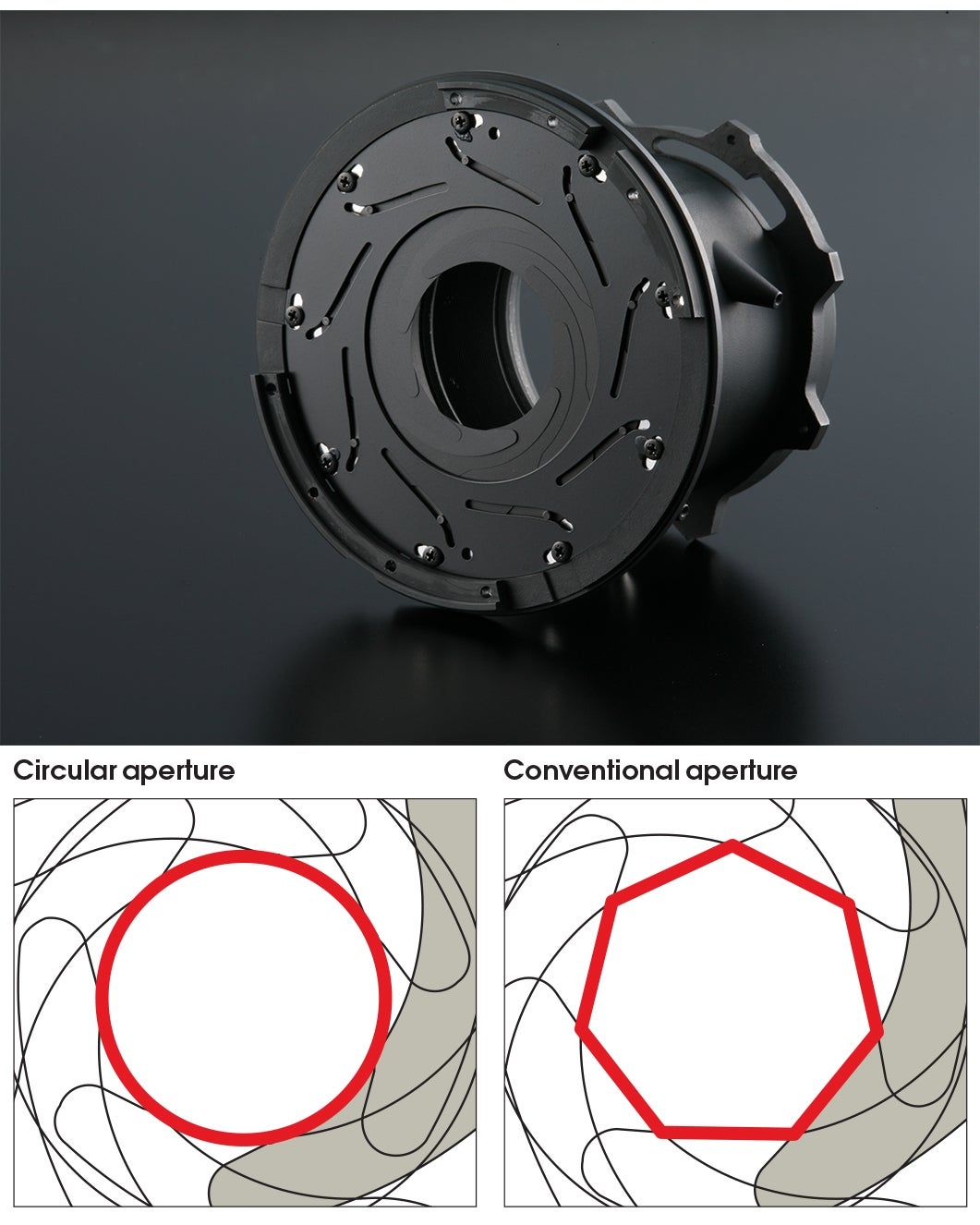
There are three lenses that just about any photographer needs—a wide angle zoom, mid-length zoom and a telephoto-zoom. With that core, you’ll have a foundation from which you can build out your quiver as the need arises. The mid-length zoom is the foundation of the foundation and for Sony shooters who want to keep their gear lightweight and compact, the Vario-Tessar T* FE 24-70mm F4 ZA OSS compact zoom is a solid performer that covers a range where you do a lot of shooting. Its f/4 aperture is constant across the zoom range and it’s compatible with full-frame and APS-C Sony E-mount cameras.

Photo by Anastasia Petukhova. Sony α7R, Sony Vario-Tessar T* FE 24-70mm F4 ZA OSS at 70mm, f/4.0
“It was difficult for me to move from natural outdoor light into this kind of setup. I tried a lot of lenses to see what works for me in these conditions and in most cases keep my Sony Vario-Tessar T* FE 24-70mm F4 ZA OSS on my a7R. For my work the f/4 aperture works because it allows me to capture the kind of mood and light that I like.” -Anastasia Petukhova

Photo by Dennis Biela
Camera: Sony α7 II, Sony Vario-Tessar T* FE 24-70mm f/4 ZA OSS at 64mm, f/6.2
“The North American P-51 a WWII American fighter. I photographed the plane for the owner out of a T-6, a 2-seat aircraft made to train pilots during the war. The T-6 has tandem seating with the student up front and the instructor pilot in the back. The OSS stabilization in the Sony Vario-Tessar T* FE 24-70mm F4 ZA OSS was a huge help on this turbulent day. The photos are stead even though I was getting bounced around in the T-6 chase plane.” –Dennis Biela

Photo by Marc Weisberg.
Sony α7S, Sony Vario-Tessar T* FE 24-70mm f/4 ZA OSS at f/11
“I always travel with a Sony Vario-Tessar T* FE 24-70mm f/4 ZA OSS for landscape photography. It’s a great focal length with little-to-no distortion and excellent color rendition with no chromatic aberration.” –Marc Weisberg

Photo by Nino Rakichevich. Sony α7R II, Sony Vario-Tessar T* FE 24-70mm f/4 ZA OSS at f/7.1
“This photo was taken during Haute Couture Fashion Week in Paris, France. I am sure my photo is better then everybody else from this group. The Sony Vario-Tessar T* FE 24-70mm f/4 ZA OSS is a compact zoom that lets me move my camera around with ease to get more interesting angles than the other photographers who have to cradle their heavy, bulky camera rigs.”

Photo by Vivienne Gucwa. Sony α7R II Sony Vario-Tessar T* FE 24-70mm f/4 ZA OSS at f//5
“As a professional travel photographer, I am always looking for evocative moments that capture the spirit of a particular location. I took this photo right before sunrise in Havana, Cuba. The only sounds that could be heard were the distant crowing of roosters as a rain storm rolled through the city. The city lights were warm and there were very few people around. Mornings are special times when locations really show their true colors (so to speak). My α7R II gives me plenty of resolution and the Sony Vario-Tessar T* FE 24-70mm f/4 ZA OSS is a compact zoom that is comfortable to walk with for hours.” –Vivienne Gucwa
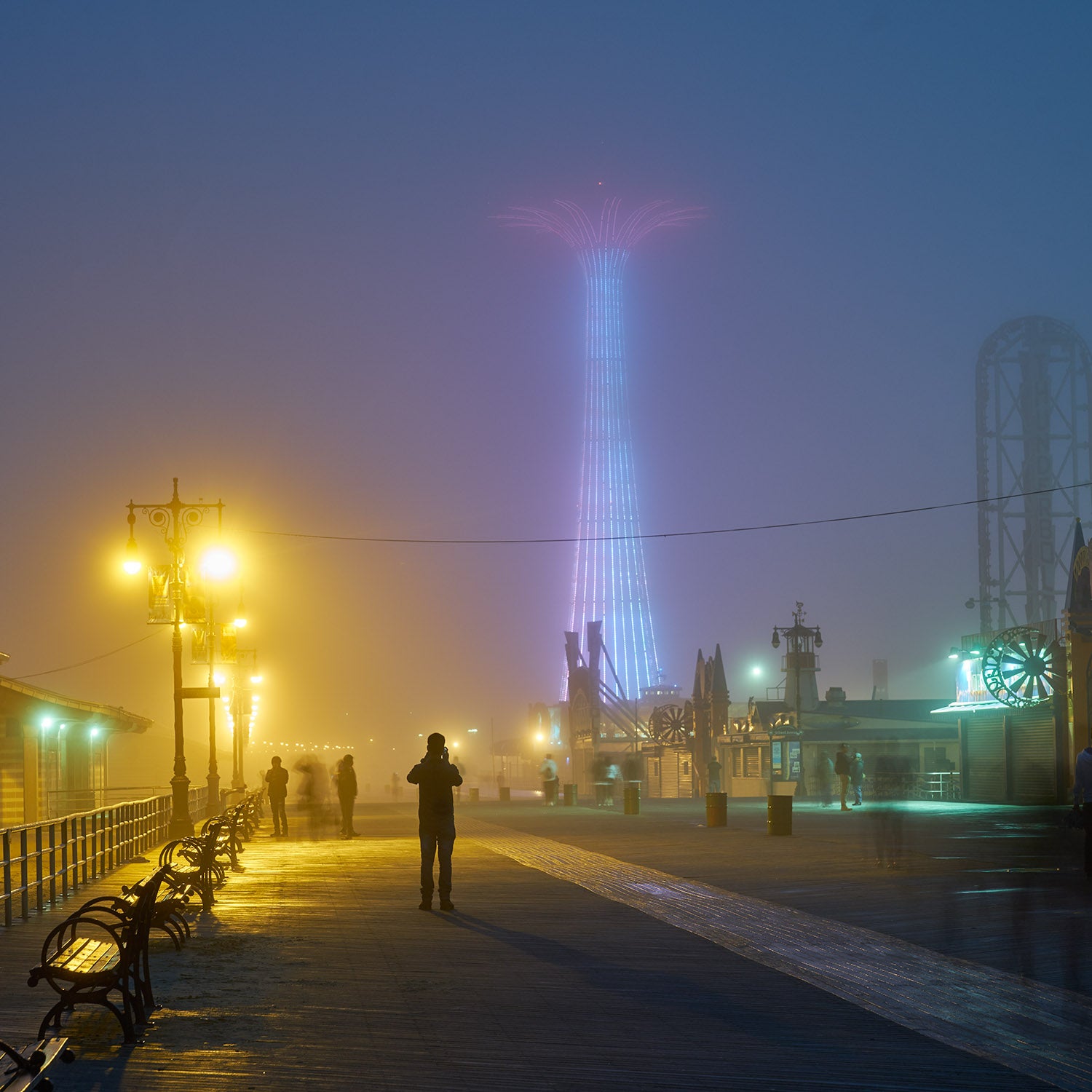
Photo Tony Gale. Sony α7R II, Sony Vario-Tessar T* FE 24-70mm f/4 ZA OSS at f/8
“Christmas 2015 in New York was very foggy, so I took the train out to Coney Island to take some night photos. I knew the boardwalk with the lights would be interesting but was surprised at how cool the parachute drop in the background would look. I was clearly not the only one who thought so, you can see the person ahead of me taking a photo as well which added a nice foreground element to the shot. The a7R II and Sony α7R II, Sony Vario-Tessar T* FE 24-70mm f/4 ZA OSS compact zoom is so light and portable, it makes it easy to just jump on a train and shoot without worrying about carrying too much heavy equipment.” –Tony Gale

Photo by Katrin Eismann. Sony α7R, 2 Sony Vario-Tessar T* FE 24-70mm f/4 ZA OSS at 46mm, f/ 9
“In this image, I wanted to create a quiet moment between the couple as they look out of frame. His gesture is protective and strong while hers’ is trusting. The rustic environment is full of texture that plays off of his leather jacket and her wavy hair perfectly.” –Katrin Eismann
Technology
Circular Aperture
When changing your aperture to defocus the background, the light sources appear blurred. This ‘bokeh’ effect of the blurred background can be enhanced with circular aperture blades used in this lens. Conventional aperture blades have flat sides creating unappealing polygonal shaped defocussed points of light. α lenses overcome this problem through a unique design that keeps the aperture almost perfectly circular from its wide-open setting to when it is closed by 2 stops. Smoother, more natural defocusing can be obtained as a result.
ED (Extra-low Dispersion) Glass
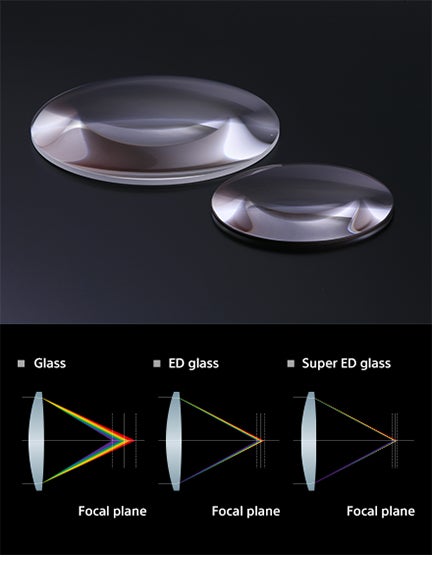
As focal lengths get longer, lenses built with conventional optical glass have difficulties with chromatic aberration, and as a result images suffer from lower contrast, lower color quality, and lower resolution. ED glass dramatically reduces chromatic aberration at telephoto ranges, and provides superior contrast across the entire image, even at large aperture settings. Super ED glass provides enhanced compensation for chromatic aberration.
Aspherical Lens Elements
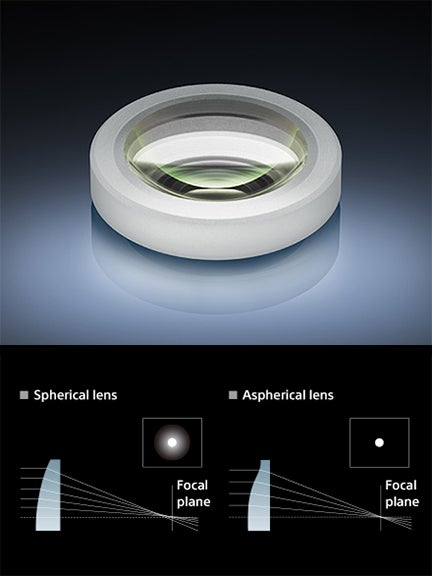
Aspherical lens design dramatically reduces spherical aberration while also reducing lens size and weight. Spherical aberration is a slight misalignment of the light rays projected on the image plane. This is caused by differences in refraction at different points on conventional spherical lenses which degrade image quality in large-aperture lenses. Specially shaped “aspherical” elements near the diaphragm restore alignment of light rays at the image plane, maintaining high sharpness and contrast even at maximum aperture and can also be used at other points in the optical path to reduce distortion. Well-designed aspherical elements can reduce the total number of elements required in the lens, thus reducing overall size and weight. Advanced Aspherical (AA) elements are an evolved variant, featuring an extremely high thickness ratio between the center and periphery. AA elements are exceedingly difficult to produce, relying on the most advanced molding technology to consistently and precisely achieve the required shape and surface accuracy, resulting in significantly improved image accuracy and quality.
Carl Zeiss T* (T-star) Coating
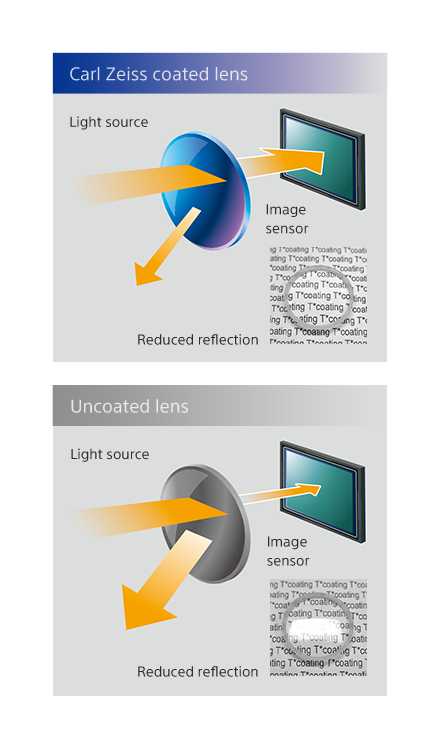
Coated optics were pioneered by Carl Zeiss - and this superb lens features the Carl Zeiss T* (T-Star) coating that virtually eliminates lens flare, internal reflection and light scattering that can otherwise occur at glass-to-air surfaces. The T* coating contributes to outstanding image quality, with high contrast and uniformly excellent resolution right out to the image edges. Not simply applied to any lens - the T* symbol only appears on multi-element lenses in which the required performance has been achieved throughout the entire optical path, therefore guaranteeing the highest quality.
Lens-based Optical Image Stabilization
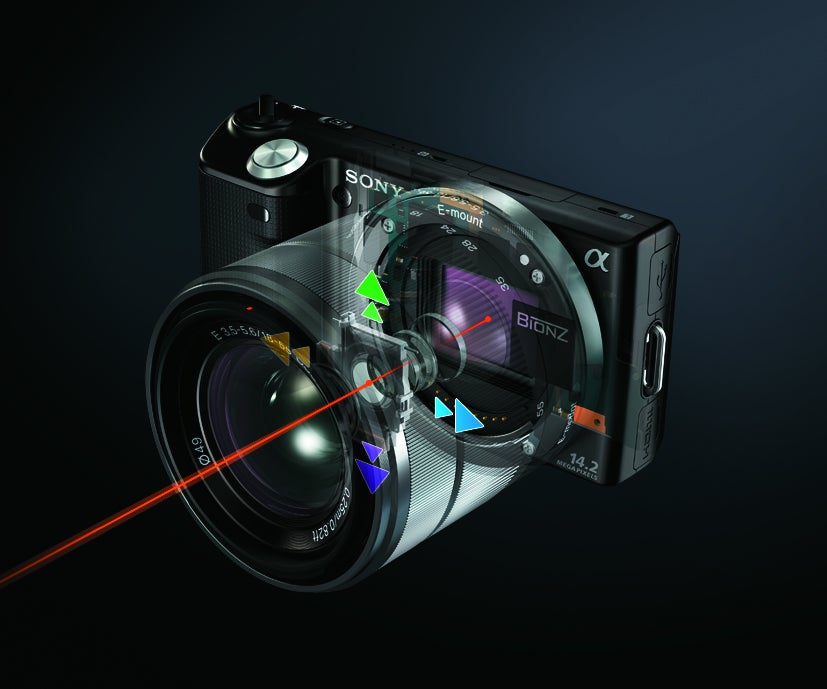
Gyro sensors built into the lens detect even the slightest movement, and the stabilization lens is precisely shifted to counteract any image blur that might occur. The use of precision, quiet linear motors and technology inherited from high-end Sony professional camcorders results in exceptionally quiet, effective image stabilization that contributes to high-quality movies as well as stills.
Internal Focusing
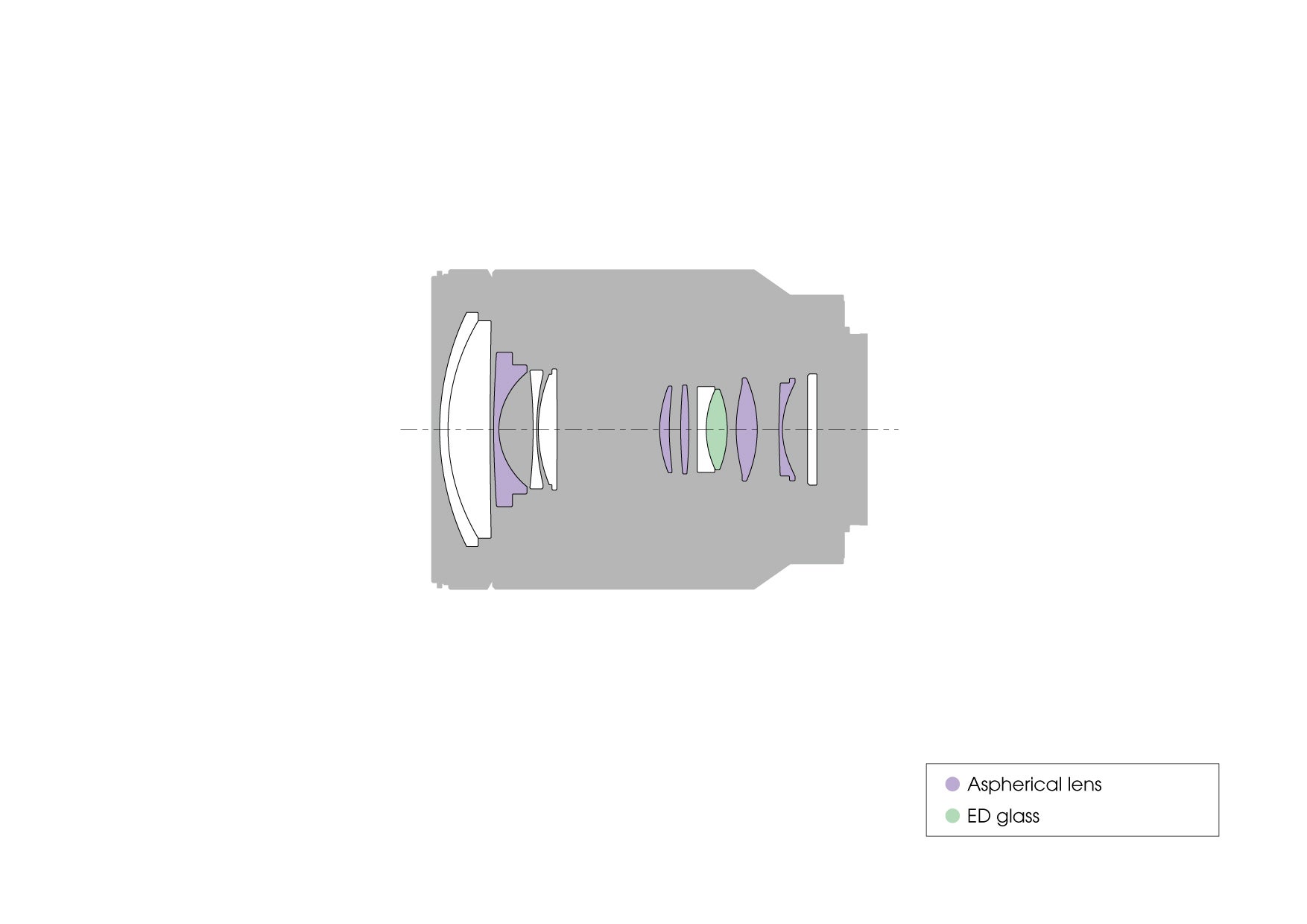
Only the middle groups of the optical system move to achieve focus, so the overall length of the lens does not change. Other important benefits include fast autofocusing and a short minimum focusing distance. Also, the filter thread at the front of the lens does not rotate, which is convenient if you’re using a polarizing filter.
